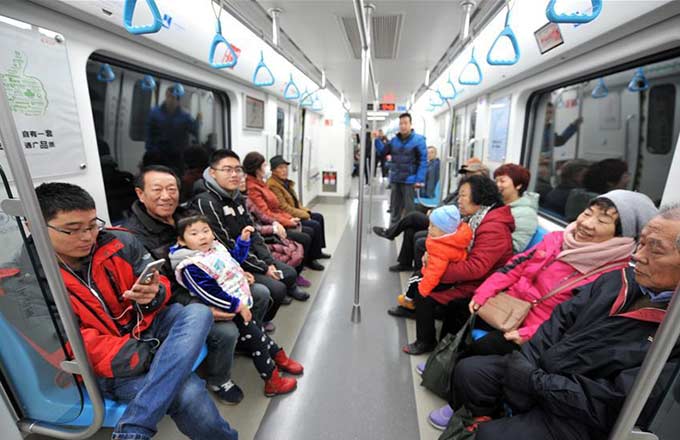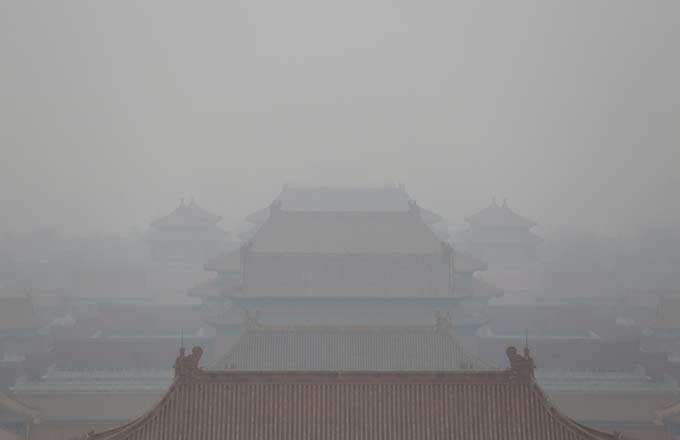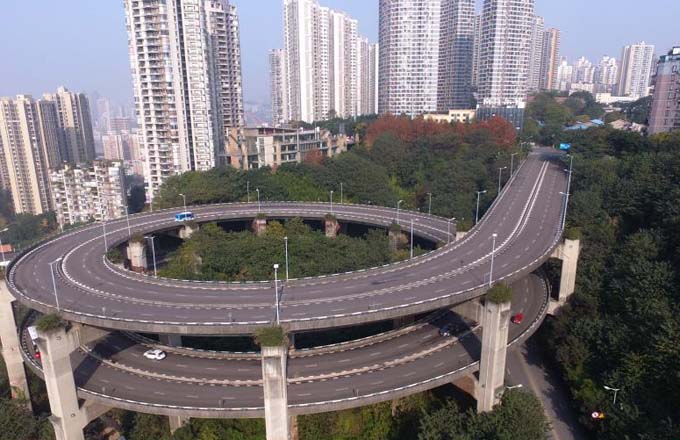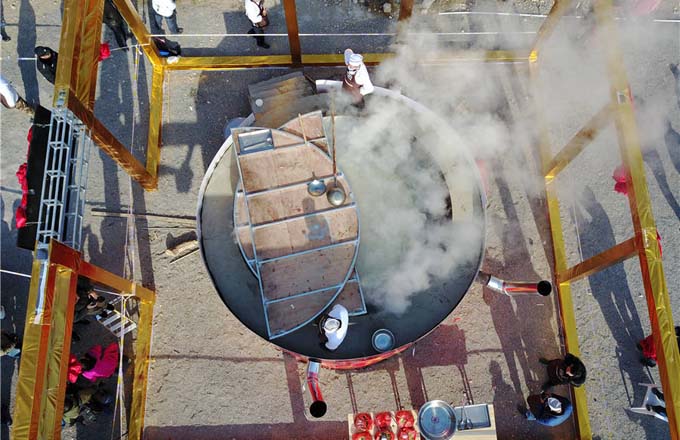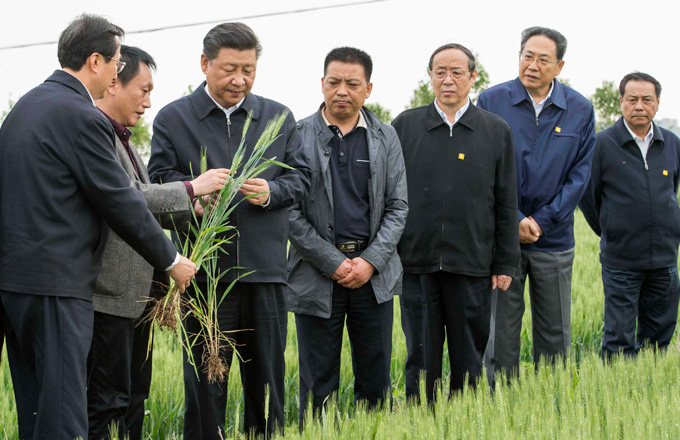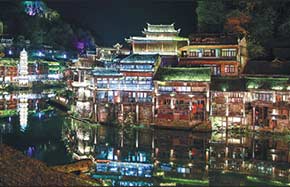China combats heavy smog with red alerts
INSPECTING AND SUSPENDING
Beijing environmental officials checked 19,000 vehicles and punished 18 drivers for excessive exhaust emissions. Some 116 outdoor barbecue and burning sites were closed in the capital on Friday.
Tianjin dispatched government inspection teams to check whether response measures have been implemented by companies, construction sites and drivers.
Many concrete companies halted production in Taiyuan, capital of Shanxi Province. Taiyuan, Linfen and two other cities in the coal-rich province have activated red alerts for smog.
In November, Taiyuan ordered suspension of some construction projects and all concrete production and foundries until the end of this year to prevent smog.
"Our company halted production and all of our 25 concrete mixers have halted operations since receiving a government notice on Nov. 22," said Cao Yihong, a manager of a concrete company in Taiyuan.
Shanxi used drones for the first time on Friday to monitor key pollution areas in Taiyuan, Lyuliang and Linfen.
The use of drones will be routine in the future as drone monitoring will provide evidence for law enforcement, said an official with the Shanxi Environmental Protection Bureau.
In Anyang City, Henan Province, where a red alert for smog is in force, 893 firms have halted production and 172 cut output. The city launched a campaign to tackle air pollution by adopting off-peak production for certain industries, such as foundries and stone processing, from November to Jan. 31 next year.
Six cities in Henan and ten cities in Hebei have issued red alerts for the current bout of smog.
In a renewable industrial park in Dingzhou City, Hebei, more than 90 factories halted production last month due to pollutant emissions, actions that were in line with the province's efforts to treat winter smog, said Liu Hongliang, an official with the park.
LONG-TERM CHALLENGE
Air quality in Beijing and surrounding areas has improved remarkably in recent years thanks to major efforts in pollution control.
Under a new government plan unveiled earlier this month, coal use in Beijing, Tianjin, Hebei, Shandong, Henan, and regions along the Pearl River Delta should drop by around 10 percent during the 2016-2020 period.
Ma Jun, director of the Institute of Public and Environmental Affairs, a Beijing-based non-profit organization, said the treatment of smog requires long-term efforts.
Local governments should publish lists of heavily polluting companies and factories and their pollution data for public oversight, said Ma.
Feng Yinchang, professor with the college of environmental science and engineering at Nankai University in Tianjin, said the fundamental method for tackling smog is adjusting and optimizing industries and energy structure as early as possible to reduce the discharge of pollutants.
Participation and action by the government, companies and citizens are required, as are unremitting efforts, said Feng.
Regional coordinated prevention could reduce pollution given the severity of the current smog in terms of area and duration, according to Chai Fahe, researcher with China Research Academy of Environmental Sciences.
"Everyone has a responsibility to combat smog," said Wang Xiaomei, a resident in Xinxiang City, Henan, adding that environmentally friendly methods of travel should be advocated, such as buses or bicycles downtown.
"We cannot wait for the wind to come when there is smog. Instead, we must take relevant measures required by emergency plans," said Zhang Wenqing, deputy head of the Linfen Environmental Protection Bureau in Shanxi.
Related Stories




